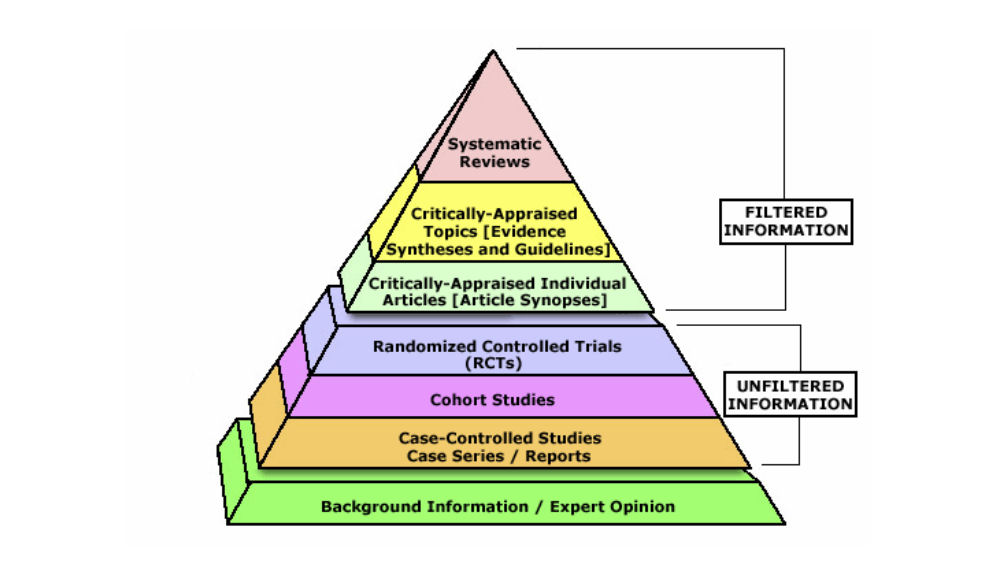Evidence Hierarchy: What is the Best Evidence?
Now that we have learned about the different types of resources – filtered, unfiltered, and background – let’s take a look at the evidence hierarchy (also known as the levels of evidence).
The evidence hierarchy pyramid is a visual representation of the strength of different research study designs. It can be helpful to think about evidence as a pyramid – not all study designs and resource types are created equal.

Filtered Information
At the top of the pyramid, we have filtered information – this includes systematic reviews, meta-analyses, and evidence syntheses; practice guidelines; and critically-appraised topics found in clinical resources. This type of information has used a high-quality methodology to synthesize primary resources – meaning that they have searched for available primary literature and evaluated its validity to provide answers to specific clinical questions. It is important to remember that the quality and reliability of filtered information can only be as good as the primary literature it includes.
Unfiltered Information
In the middle of the pyramid, we have unfiltered information – this is known as primary literature. These are individual experimental study designs. A randomized controlled trial is considered the highest quality individual study design, followed by cohort studies and case-controlled studies. We will discuss these study designs in more detail later in the tutorial.
Background Information
At the base of the pyramid, we have background information and expert opinion. Background information is not typically used in making complex clinical decisions, but can be helpful in defining parts of your clinical question.

